
Download Free Apps & Games @ PHONEKY.com

Download Free Apps & Games @ PHONEKY.com
Subject: Festival of INDIA
Replies: 14 Views: 7342
kriishna 8.10.10 - 11:26am
Here u can Knw about all Festival of india..ALSO U GREET-WISH ALL FOR THER FESTIVAL.. *
kriishna 8.10.10 - 01:03pm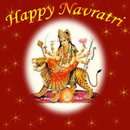 *
*
kriishna 8.10.10 - 01:04pm
HAPPY NAVRATRI TO ALL *
kriishna 20.10.10 - 10:59pm ----
---- -----
----- *
*
kriishna 20.10.10 - 11:04pm
History of Diwali_--------
Diwali most popularly known as the festival of lights is one of the grand festivals of India, which is in other words, can be described as the land of innumerable festivals. Diwali is celebrated since ancient times. In words, it is hard to describe the actual reason or the history of Diwali. It is believed that there are many possible reasons behind the origin of Diwali. It is also true that different types of people believe in different types of historical reasons. This page consists of some of the more popular historical reasons of Diwali origin. So, just check them out....
Diwali History---
The most popular history behind the celebrations of Diwali is that this day marks the return of Lord Shri Rama Chandra after his exile and his defeat over Ravana.
On this day, Lord Shri Rama, his wife Sita and his loyal brother Laxman returned to Ayodhya after 14 long years of exile. He returned after defeating demon king Ravana who abducted Sita. In his battle against Ravana,Lord Hanuman and the military of monkeys helped him.
.. In Ayodhya, people lit lamps and diyas (earthen lamps) and celebrated the homecoming of Lord Shri Rama. The people also lit firecrackers as an expression of their happiness and joy. They welcomed Lord Shri Rama with lit lamps. And since then the tradition continued and every year the festival of Diwali is celebrated by lighting millions of lamps on this auspicious day as a gesture of respect. Prayers are offered in temples.
This story of Ramayana, the Hindu epic is indeed the most popular story behind the celebrations of Diwali. Lord Rama who was the prince of Ayodhya was ordered by the king of Ayodhya and his father King Dasharatha to go away and return only after completing 14 long years in the forest.
Lord Rama followed his orders and left with his wife Sita and brother. During that period Demon king Ravana abducted Sita and took her to his kingdom of Lanka. Lord Rama fought against the demon king and ultimately killed him. In this way, Lord Rama rescued Sita and returned to Ayodhya. People of Ayodhya decorated Ayodhya with millions of lamps and celebrated this significant day.
Ever since then, the homecoming of Lord Shri Rama was celebrated and the tradition of lighting lamps, bursting firecrackers is observed as Diwali. This festival is also called as Dipawali.
Another not-so-well-known story is believed to have started the Diwali celebrations. Lord Krishna had a battle with demon Narakasura and defeated him and emerged as the winner. People celebrated his victory lamps.
*
kriishna 21.10.10 - 01:37am
DIWALI SWEET-
------------------
Diwali Foods---Diwali Recipes
----It is a common tradition in India that just B4 the festival of Diwali, the female members of the family start preparing special dishes and foods entirely meant for Diwali with special Diwali Recipes.
This festival of lights, also known as Dipawali has a common custom of exchanging sweets along with the gifts to their loved ones. The homemade sweets and snacks are more appreciated by all. So have a look at some of the mouth-watering and traditional Diwali special delicacies that are listed below along with the Diwali Recipe notes--------
Besan ki Barfi-----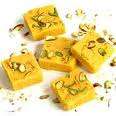 ---
---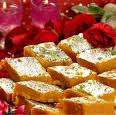 Ingredients Besan-Sugar-Ghee, Water-Pistachios and Almonds for garnishing.....
Ingredients Besan-Sugar-Ghee, Water-Pistachios and Almonds for garnishing.....
Directions Firstly, in a pan heat ghee and fry the besan in it for near about 30 minutes. Stop frying it when the color of the besan becomes slight pink and it separates from ghee. Prepare syrup of sugar and water and then add it to the besan. Mix it properly and pour it in a tray that is thoroughly greased. Let it cool, and then cut the mixture into cubical pieces. Serve it after garnishing it with almonds N pistachios
-------------------
KHEER---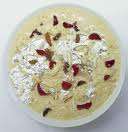 -Ingredients-Long grain rice (properly washed and drained), milk, sugar, almonds, cardamom seeds, saffron, pistachio nuts, raisins..
-Ingredients-Long grain rice (properly washed and drained), milk, sugar, almonds, cardamom seeds, saffron, pistachio nuts, raisins..
Directions- firstly put all the main ingredients that are milk, rice and sugar in a pan and boil them. Boil them gently until the rice becomes soft and starts to break up. Add the almonds, raisins, cardamom seeds, saffron, and the pistachio nuts to the mixture and let it simmer for some more minutes. Add the sugar at the end and let it dissolve completely Remove it from the heat and serve it hot or cold as per your wish. It tastes awesome in both ways........
BADAM FIRNI-- ----
----
Ingredients Almonds,Milk, sugar,Rice flour, saffron, cardamom powder.....
Directions- Firstly, make a fine paste by grinding the almonds with milk. Then mix the almond paste with rice flour. In a pan boil milk, add sugar to it and stir properly. Separately dissolve the saffron in a little amount of milk. After that add the mixture of the almond paste and the rice flour into the boiling milk that also comprises saffron. Stir the mixture continuously until the entire mixture thickens. Remove it from fire and add the cardamom powder and let it cool in the room temperature and then refrigerate it. Garnish it with pistachios and almonds and your delicious Badam Phirni is ready to be served.......
*
kriishna 21.10.10 - 01:42am
GUJIYA----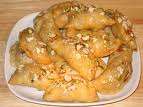 ----
----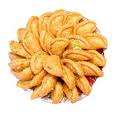 -----
-----
--Ingredients-Flour- Raisins-Khoya-Almonds-Edible oil-water and sugar....
DIRECTION--Firstly make a binding consistency by mixing the flour with oil and some water. After making the dough set it aside by covering it with a damp cloth, then in separate pan heat some oil and fry the khoya until its color changes to light brown, then add sugar and mix it thoroughly. Add raisins and almonds to the mixture. After that make small sized chapattis out of the dough and fill it with the khoya mixture and seal the edges and deep fry them. Serve them hot or if you wish you can also store them and can have it anytime. *
kriishna 21.10.10 - 01:47am
GAJAR HALWA--
-- --
-- --Ingredients--Carrots, milk, water, cardamom seeds, almonds, pistachios, sugar, ghee, raisins...
--Ingredients--Carrots, milk, water, cardamom seeds, almonds, pistachios, sugar, ghee, raisins...
DIRECTION--Wash and properly grate the carrots. Then boil some water and add the grated carrots in it. Cook for near about 7 or 8 minutes. Then add milk and continue cooking on a low flame and stir the mixture in between. Add sugar, and milk and cook it until the sugar gets dissolved in the milk. Add ghee and the raisins and properly crushed cardamom seeds. Mix the whole mixture well. Remove it from the heat and serve it hot after garnishing with pistachios and almonds.
With all these mouth-watering recipes, you will surely have a delightful Diwali. *
kriishna 21.10.10 - 01:52am
Diwali rangoli----- ----
---- ----
---- ----
----
During Diwali rangoli is designed at the doorstep to welcome Goddess Laxmi and guests. Rangoli, across India is popular with different names like Alpana (in Bengal) and kolam (in South India). Rangoli word can be broken into two words rang which mans color and aavalli string of color__ It is a Sanskrit word which means row of colors. Diwali rangoli is a creative expression of art through the use of color. Some of the popular Diwali motifs are Lord Ran, Sita and Laxman, Goddess Laxmi, lotus, floral patters, and celestial patterns such as the sun, the moon and the stars etc...The main reason behind the Diwali rangoli by the families is to welcome Goddess Laxmi, deity of wealth and fortune into the household and ward off the evil spirits. To make beautiful and intricate Rangoli patterns, a variety ingredient are used like barks of trees, leaves and flowers; rice, synthetic colors, cereals, pulses, and colored powder such as rice, brick, chilly, turmeric etc.
*
kriishna 21.10.10 - 02:02am
DIWALI-CRACKERS--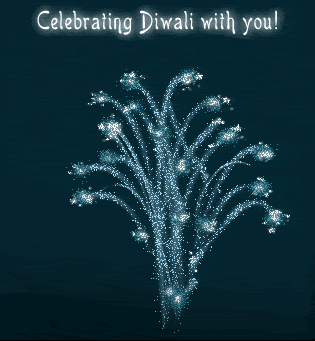 ----
----
-For many of us, Diwali is a special occasion, not only because its an auspicious festival but also because, we can burst crackers and have a blast. Diwali is the festival of light and brilliant display of Diwali crackers and fireworks add to its sheen and gory. People of the age groups from young to old, all have fascination for crackers.
Anar, chakra, phuljhari are some of various kinds of diwali cracker that are busted on Diwali. hen are high flying rockets, mild flower pots, electric crackers and the explosive and almost ear deafening bombs. *
kriishna 21.10.10 - 02:03am
Crackers and fireworks add to the sparkling festivity and lights up the sky, in the background of the constellation of stars at night. Their sparkle is a visual delight. *
kriishna 21.10.10 - 02:07am
Diwali is an important Hindu festival, symbolizing the triumph of goodness over evil. The entire nation celebrates Diwali with pomp and pageantry. Adding to the festivities, Diwali firecrackers spark the wave of joy and fill happiness in very heart...CRACKERS----- ---
--- ----
----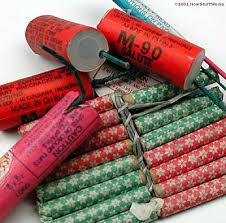
----
----- *
kriishna 13.01.11 - 10:37am
Makar Sankranti Festival-------
Content----
Tithi
History
Information
Importance
Methods of celebration - Haldi-kumkum ceremony
--Culture & festivities-----
_TiTHii-DATE_
-This festival, unlike other Hindu festivals, is not dependent on the position of the moon, but on position of the sun. On this day, the sun enters the zodiac sign of Capricorn. To compensate for the difference that occurs due to the revolution around the sun, every eighty years the day of sankrant is postponed by one day. In the present period Makar sankrant falls on 14th January______
History---
Sankranti is considered a Deity. According to a legend Sankranti killed a demon named Sankarasur.The day followed by Makar sankrant is called Kinkrant or Karidin. On this day, the female deity (devi) slayed the demon Kinkarasur
----------
Information--
--Information on Sankranti is available in the Panchang: The Panchang (Hindu Almanac) provides information on the form, age, clothing, direction of movement etc. of Sankranti. This information is appropriate to the changes taking place in Her according to time. He who is touched by Goddess Sankranti gets destroyed__________
-Importance-
--The northward movement of the sun begins on this day. The period from Karkasankrant (the passage of the sun into the zodiac sign of Cancer) to Makarsankrant is called the dakshinayan. A person who dies in the dakshinayan period has a greater chance of going to Yamalok (southward region), than one who dies during uttarayan northward revolution
---Importance from the point of view of spiritual practice-On this day, from sunrise to sunset, the environment has more chaitanya (Divine conscious-ness); hence those doing spiritual practice can benefit from this chaitanya.......
Methods of celebration.---
--
--Applying the Kumkum between
eye-brows----------
Benefit of highest merit acquired by a Holy dip on the day of Makarsankrant: The time from sunrise to sunset on Makar-sankrant is auspicious. A Holy dip during this period carries special significance. Those who take a Holy dip in the rivers Ganga, Yamuna, Godavari, Krushna and Kaveri at the Holy places situated on the banks of these rivers acquire the highest merit...
Offering-- Importance of making an offering during a auspicious period-The period from Makarsankrant to Rathsaptami is an auspicious period,Any donation N meritorious deeds in tis period prove more fruitful.....
--Substances offered-------
 -------
-------
3_Importance of haldi-kumkum ceremony performed by married women on sankranti-Performing haldi-kumkum (Turmeric powder and saffron) ceremony is in a way invoking the waves of dormant Adi-shakti in the Universe to get activated. This helps in creating impression of Sagun (Materialised) devotion on the mind of an individual and enhances his bhav (Spiritual emotion) unto God........
_A_Five steps in haldi-kumkum ceremony------
1. Applying haldi-kumkum : Applying haldi-kumkum to a suvasini (A married woman whose husband is alive) activates the dormant Principle of Sri Durgadevi in her and bestows well-being to the applier suvasini.
2. Applying perfume : Fragrant particles emitting from the perfume please the Principle of the Deity and bestow well-being to the applier suvasini within a shorter period.
3. Sprinkling rose-water : The fragrant waves emitted by the rose-water activate the waves of the Deity and purifies the environment, and the suvasini who sprinkles it gets greater benefit of the activated Sagun Principle of the Deity.
4. Offering a gift : A gift offered is always supported by the end of the pallu of the sari. Offering a gift to another suvasini amounts to surrendering to the divinity in her, through sacrifice of body, mind and wealth. Giving support of the end of pallu of the sari means leaving attachment to even the clothes worn on the body and thus learning to overcome body awareness. Since the period of sankranti is favourable for sadhana, a gift given during this period pleases the Deities quickly and they bestow the donor suvasini with the desired fruit.
4 A. What should be gifted ? : Instead of gifting non-dharmik commodities like soap, plastic items etc., objects complementary to Spirituality and are indicators of a married life, such as incense-sticks, ubtan (Fragrant herbal powder), religious and Holy texts, pictures of Deities, CDs on spiritual topics etc. should be gifted.
Small mud pots: The festival of sankrant requires small mud pots called sugad (in the Marathi language). Vermilion and turmeric powder is applied to the pots and a thread is tied to them. They are filled with carrots, jujube fruits, sugarcane pieces, pods, cotton, chickpeas, sesame seeds with jaggery, vermilion, turmeric etc. Five pots are placed on a wooden seat, rangoli is drawn around the seat and worshipped. Of these, three are gifted to married women, one is offered to the tulsi plant and one is retained......
Use of sesame seeds---
 -----
-----
Importance of sesame seeds - Using sesame seeds eliminates sins: On this day those who apply sesame seed oil and utane to the body, bathe in water mixed with sesame seeds, drink water mixed with sesame seeds, perform a sacrificial fire, make an offering of sesame seeds and make similar use of sesame seeds, are liberated of all sins.
Importance according to Ayurved: Since sankrant falls in winter, consuming sesame seeds is beneficial.
Importance according to Spirituality:
1. Since sesame seeds have a greater ability to absorb and emit sattva frequencies, consuming tilgul helps improve spiritual practice. Distributing tilgul to one another results in an exchange of the sattva component.
2. Using sesame seeds in shraddh prevents demons from bringing obstacles during the rite.
Forbidden acts!
During the period of sankrant, brushing teeth, talking harshly, cutting trees or grass and acts provoking s*xual urges should be avoided...Do not fly kites.---
Today, when the Nation and Dharma are in peril, flying kites for the sake of entertainment is akin to, 'Nero playing the fiddle while Rome burnt'. If the time spent on flying kites is used for the development of the Nation, it will make it progress faster; and if used for spiritual practice and missions related to Dharma, then society and the individual will benefit.
*
kriishna 13.01.11 - 11:01am
Culture-N- Festivities..
---- --
--
---This festival is celebrated differently in different parts of the country.---
_Uttar Pradesh_-----In Uttar Pradesh, Sankrant is called Khichir- Taking a dip in the holy rivers on this day is regarded as most auspicious. A big 1-month long- Magha-Mela-fair begins at Prayag (Allahabad) on this occasion. Apart from Triveni, ritual bathing also takes place at many places like Haridvar and Garh Mukteshwar in Uttar Pradesh, and Patna in Bihar..........
_Bengal_--
In Bengal every year a very big Mela is held at Ganga Sagar where the river Ganga is believed to have dived into the nether region and vivified the ashes of the sixty thousand ancestors of King Bhagirath. This mela is attended by a large number of pilgrims from all over the country.......
Tamil Nadu--
In Tamil Nadu Sankrant is known by the name of -Pongal--which takes its name from the surging of rice boiled in a pot of milk, and this festival has more significance than even Diwali. It is very popular particularly amongst farmers. Rice and pulses cooked together in ghee and milk is offered to the family deity after the ritual worship. In essence in the South this Sankrant is a Puja (worship) for the Sun God.......
_Andhra Pradesh_----
In Andhra Pradesh, it is celebrated as a three-day harvest festival Pongal. It is a big event for the people of Andhra Pradesh. The Telugus like to call it 'Pedda Panduga' meaning big festival. The whole event lasts for four days, the first day Bhogi, the second day Sankranti, the third day Kanuma and the fourth day, Mukkanuma.....
-_Karnataka_
In Karnataka, the festival is marked by visiting one's friends and relatives to exchange greetings, and by the preparation of a dish called Ellu (made with sesame seeds, coconuts, sugar blocks, etc). A common custom found across Karnataka is the exchange of sugarcane pieces and Ellu with one's neighbors, friends and relatives. In Karnataka, Pongal is known as 'Sankranti', and cows and bullocks are gaily decorated and fed 'Pongal'- a sweet preparation of rice. Special prayers are offered. In the evening, the cattle are led out in procession to the beat of drums and music. In the night a bonfire is lit and the animals are made to jump over the fire...........
Makar Sankranti is marked by men, women and children wearing colorful clothing; visiting near and dear ones; and exchanging pieces of sugarcane, a mixture of fried til, molasses, pieces of dry coconut, peanuts and fried gram. On this auspicious day, people in Karnataka distribute Yellu and bella (Sesame seeds and Jaggery) and greet with the words Ellu bella thindu, Olle Maathu Aadu (Eat sesame seeds and speak only good). The significance of this exchange is that sweetness should prevail in all the dealings----
-Maharashtra-
--- ------In Maharashtra on the Sankranti day people exchange multi-colored tilguds made from til (sesame seeds) and sugar and til-laddus made from til and jaggery. Til-polis are offered for lunch. While exchanging tilguls as tokens of goodwill people greet each other saying til-gul ghya, god god bola meaning accept these tilguls and speak sweet words. The under-lying thought in the exchange of tilguls is to forget the past ill-feelings and hostilities and resolve to speak sweetly and remain friends. This is a special day for the women in Maharashtra when married women are invited for a get-together called Haldi-Kumkum and given gifts of any utensil, which the woman of the house purchases on that day. Hindus wear ornaments made of -Halwa--on this day..
------In Maharashtra on the Sankranti day people exchange multi-colored tilguds made from til (sesame seeds) and sugar and til-laddus made from til and jaggery. Til-polis are offered for lunch. While exchanging tilguls as tokens of goodwill people greet each other saying til-gul ghya, god god bola meaning accept these tilguls and speak sweet words. The under-lying thought in the exchange of tilguls is to forget the past ill-feelings and hostilities and resolve to speak sweetly and remain friends. This is a special day for the women in Maharashtra when married women are invited for a get-together called Haldi-Kumkum and given gifts of any utensil, which the woman of the house purchases on that day. Hindus wear ornaments made of -Halwa--on this day..
--------------------------
GUJRAT------
In Gujarat Sankrant is observed more or less in the same manner as in Maharashtra but with a difference that in Gujarat there is a custom of giving gifts to relatives. The elders in the family give gifts to the younger members of the family. The Gujarati Pundits on this auspicious day grant scholarships to students for higher studies in astrology and philosophy. This festival thus helps the maintenance of social relationships within the family, caste and community. Kite flying has been associated with this festival in a big way. It has become an internationally well-known event...
----------------------------------------
Punjab:
In Punjab where December and January are the coldest months of the year, huge bonfires are lit on the eve of Sankrant and which is celebrated as LOHARI. Sweets, sugarcane and rice are thrown in the bonfires, around which friends and relatives gather together. The following day, which is Sankrant, is celebrated as MAGHI. The Punjabi's dance their famous Bhangra dance till they get exhausted. Then they sit down and eat the sumptuous food that is specially prepared for the occasion.
Kerala:
The 40 days hthana by the devotees of Ayyappa ends on this day in Sabarimala with a big festival.
Bundelkhand:
In Bundelkhand and Madhya Pradesh this festival of Sankrant is known by the name Sakarat and is celebrated with great pomp & merriment accompanied by lot of sweets.
Tribals of Orissa:
Many tribals in our country start their New Year from the day of Sankrant by lighting bonfires, dancing and eating their particular dishes sitting together. The Bhuya tribals of Orissa have their Maghyatra in which small home-made articles are put for sale.
Assam:
In Assam, the festival is celebrated as Bhogali Bihu.
*
kriishna 13.01.11 - 11:34am
Celebrating Lohri-----
 ---------
---------
Gayatri Sankar-
Indian festivals are all about big gatherings which exhibit the joy of togetherness. The Punjabi festival of Lohri is no different. Bonfires form a quintessential aspect of the festival and a healthy sport unites the gathering as everyone competes to light up the biggest bonfire in the neighbourhood. Puffed rice and peanuts are thrown into the fire as an offering to the fire god and songs and dance add to the revelry........
Legend of Lohri: ---------There are various stories that describe the origin of this festival. The most relevant of them being the Dullah Bhatti. The day marks the end of the lifeless and appallingly cold month of Pos and is followed by Makar Sankranti that marks the commencement of the brighter and sunny month of Magh . The auspicious day is of great importance to the newlyweds and the new born babies.
Lohri is also considered as a Thanksgiving Day to thank the Sun God for giving people relief from the extreme cold weather and to rejuvenate life on earth. It is believed that girls form a group and visit houses in the villages to ask for cow-dung cakes. Legend has it that the forefathers had devised a sacred mantra which had the power to protect people from bone-chilling cold. The mantra devoted to the Sun God was chanted round the fire on the day.
Lohri, by tradition is linked with the harvest season. It is a day where in people pray to the Almighty to grant them with a good harvest...........
Celebrations-
---The festival embodies the spirit of togetherness, brotherhood, gratitude and reminds humans of being in unison. The celebrations are symbolic in nature as every custom has relevance to our daily routine.
Lohri brings the whole community together. Sweets made of Til (Sesame seeds) and Gud (Jaggery) are prepared. The bonfire is an important feature of the celebrations. It is considered to be sacred and new born babies are taken around it. According to the legend, Lohri sets the tone for the entire year. So people make most of the occasion to ensure the year passes smoothly and ushers in peace and prosperity. It is also believed that Holika (Bonfire before Holi) and Lohri (Bonfire on the day of Lohri) were sisters. While Holika was burnt into ashes when set on fire, Lohri survived and is still alive.
Makke Di Roti and Sarson Da Saag (the traditional Indian bread and curry made of mustard leaves) for the event are prepared on this day. The Lohri Prasad consists of five food items which include the Til (Sesame), the Gajak (a sweet preparation), Gud (Jaggery), Moongphali (Peanuts) and Phuliya . These are offered to the fire God to seek his blessings.
The bright and cheerful festival is celebrated with much enthusiasm and fanfare. It is indeed a social gathering and people from all walks of life, irrespective of caste colour and creed take part in it. Men shake a leg to Bhangra while the women dance the Gidda. The colourful attire of the dancers, the gusto, the mesmerizing music make the celebrations vivacious________
FAIRS---Fairs and exhibitions on Lohri look picturesque. Delicious and mouth watering food preparations and handicrafts like toys, bangles and other accessories are put up on stalls.
Lohri Melas are attended by people in large numbers who parti te in the event. They take part in wrestling, acrobatics, group dancing and other group activities. The gathering looks colourful and zestful.
The awe inspiring festival which is celebrated with much exuberance and fanfare symbolizes the spirit of oneness. The festival is one that bridges social gaps and imparts the message of being in unison.
Heres wishing everyone a very happy and a prosperous Lohri and may God bless the farmers with abundance of harvest and grant them the power to feed millions.
*
